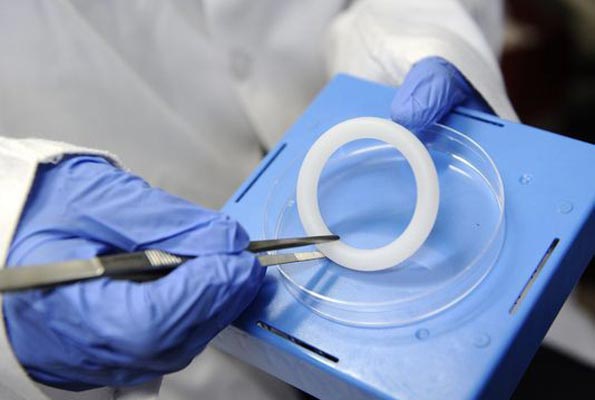Vaginal ring protects women from getting HIV by 61 per cent

The ring that is coated with an anti-Aids drug is designed for women to insert into the vagina once a month to reduce the risk of HIV infection. File photo.
What you need to know:
Scientists have long sought tools to help protect women against infection when their partners will not use a condom. The vaginal ring has proved safe although the protection is modest, reducing overall HIV infection by less than a third writes Sandra Janet Birungi.
HIV negative women can now be protected against acquiring the virus up to 61 per cent by using a vaginal ring, new studies have shown.
The studies titled The Ring Study and ‘A study to prevent infection with a ring for extended use’ (ASPIRE) were carried out by International Partnership for Microbicides (IPM) and Microbicide Trials Network (MTN).
The Ring Study, led by IPM, showed that the monthly ring safely reduced HIV infection overall by 31 percent while the ASPIRE study found that the ring reduced infection by 27 per cent overall. However, protection against the virus increased depending on the age of the woman largely due to consistency in use.
ASPIRE showed that for women above the age of 25, the ring reduced HIV risk by 61 per cent and 56 per cent in women older than 21. The Ring Study also showed a 37 per cent higher efficacy for women above 21.
According to Dr Jared Baeten who led the ASPIRE study at MTN, the ring is not only easy to use but can be used discreetly and privately.
“The HIV prevention field for women has struggled in the last few years. Now, for the first time, we have two trials demonstrating that a female-controlled HIV prevention method can safely help reduce new HIV infections. I’m optimistic about what these results might mean for women worldwide,” Dr Baeten said while releasing the results on Monday at the Conference on Retroviruses and Opportunistic Infections (CROI) in Boston.
The ring which is filled with Dapirivine, a drug used for antiretroviral treatment, is inserted manually at the tip of the cervix through the vagina and the drugs are released into the body throughout the month before being refilled.
Dr Annalene Nel from IPM said the study targeted at women in Africa because they have a higher risk of HIV infection mainly because of unprotected sex.
“Women have limited options; abstinence, monogamy and use of male condoms are not realistic or practical for many women yet daily oral ARV pills known as PrEP still remain a new method and may not be easy for some women to use. The flexible ring is easy for a woman to insert herself and provides sustained-release of dapivirine locally to the site of potential infection during vaginal sex,” Dr Nel explained.
Rollout
The Ring Study enrolled 1,959 HIV-negative women ages 18-45 at seven sites in South Africa and Uganda while ASPIRE enrolled 2,629 HIV-negative women ages 18-45 at 15 sites in Malawi, South Africa, Uganda and Zimbabwe. ASPIRE began in 2012 and ended in 2015.
The Ring Study also began in 2012 and is reporting results early after its independent data safety and monitoring board recommended the study proceed to final analysis.
According to Dr Flavia Matovu Kiweewa, the principal investigator of the ASPIRE study at the Makerere University – Johns Hopkins University (MU-JHU) Research Collaboration, Mulago, Uganda, the vaginal ring can be used by women at high risk such as married women and those in the reproductive age between 18 and 40 years of age.
“The drug acts as a shield for the virus; if an HIV infected person has sex with a woman with a ring and the virus manages to get out, it will meet the drug in place and fight against it immediately hence no infection,” Dr Nakabito expounded.
Because of the success recorded, Dr Baeten of MTN said by late 2018 or early 2019, the ring would be available for usage after being officially licensed, at the moment, its regulatory sponsor, IPM, is going to submit information for a license.




